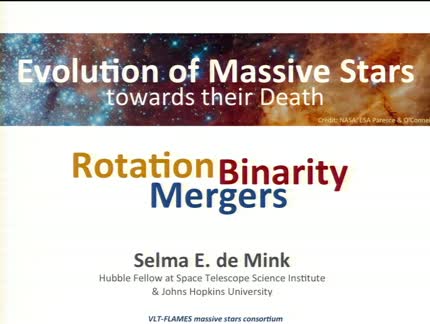Found 13 talks width keyword binaries

Abstract
The theory of stellar evolution is well developed over the past decades, and in particular the predictions of one dimensional numerical models have passed basic observational tests. With the advent of high precision astronomical observations, these tests can now be improved to fine tune the physics of the models. In particular, the combination of exploiting binary properties with the information obtained from asteroseismology, proves to provide a promising test framework. However, both binarity and seismology increase the complexity of the observational models and their relation to the stellar evolutionary model, and therefore require as many independent tests as possible.

Abstract

Abstract
Spectroscopic analysis of stellar populations is widely used to understand the history of many systems including globular clusters, nuclear star clusters, dwarf galaxies through to giant galaxies over a wide range of redshifts. In this talk I first explore aspects of stellar population fitting, focussing on the effects of interacting binary stars on the yields and hence the spectra of early-type galaxies. The second part of the talk concentrates on what we know about supernovae type Ia and the importance of understanding their contributions to the chemical evolution of galaxies and stellar populations.
<< First « Newer 1 | 2 Older »
Upcoming talks
- Seminario de Instrumentación: Space-based Quantum Physics ExperimentsJuan YinFriday May 3, 2024 - 10:30 GMT+1 (Aula)









